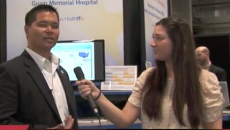Interoperability
As associations, advocacy groups and other interested parties gear up to submit comments on meaningful use Stage 2, John Loonsk, MD, explains how health IT professionals can offer opinions on the proposed rules, making substantive suggestions without actually weakening the regulation.
When ONC stands up the NwHIN-Exchange in October, there will be at least 25 partners spanning military, private and public health entities sharing patient records with each other on the back of various standards.
For the IT team at EKCITA HIE, it was an exhilarating end to an impromptu challenge – the challenge posed by the country’s top champion for interoperable healthcare, no less.
New York hookers spreading HIV. Killer mosquitos. An anthrax-toting terrorist. An urban-scape rife with the sick and poor. These are just some of the challenges tackled by Farzad Mostashari, a Yale-educated physician, epidemiologist and self-confessed computer nerd. His current mission: moving doctors from the Age of Gutenberg into the 21st century. For starters, he'd like them to use e-mail at the office.
Ed C. Cruz, CIO of the Bureau of Information Technology for Guam's healthcare information exchange, explains the direct secure messaging aspect of the Guam HIE in the event of a natural disaster in Guam, while Charles J. Knell III, PMP, Practice Director & Support Contractor for HHS demonstrates how HHS works with the Guam HIE to achieve coordinated care in such emergency scenarios.
Walgreens will use Surescripts' Clinical Interoperability services to electronically deliver patient data directly to primary care providers. The intent, say Walgreens officials, is to improve the coordination of care.
HL7: not just for IT anymore. That thinking is the catalyst behind a triptych of recent moves designed to open the standards process up to more health professionals, notably caregivers.
For physicians, the proposed rule for meaningful use Stage 2 offers some changes that make it easier for healthcare providers to demonstrate the requirements, including aligning measures with other quality reporting programs.
When Secretary of Defense Leon Panetta and Secretary of Veterans Affairs Secretary Eric K. Shinseki met at the Pentagon earlier this week, EHRs was one of the topics on the table.
In their Views from the Top session, "Mercy Rising in Joplin: How Advanced Planning and Resolve Are Helping Us Rebuild," Lynn Britton, president and CEO, and William Showalter, vice president and CIO, both of Mercy Health, shared their experiences of recovering essential information and services, reestablishing information and workflow and rebuild.
